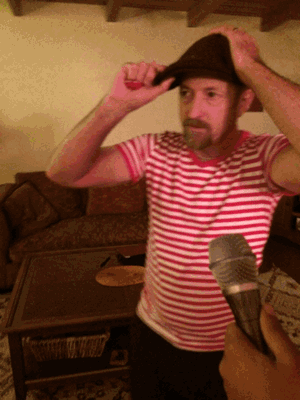Scary Clowns Are No Joke To Real Clowns
Clowning Around
The headlines scream about “The Great Clown Scare of 2016.” News reports of creepy clown sightings started to appear in late summer and were followed by copycat scary clowns around the country. School officials have banned clown masks, some even going as far as to prohibit the mention of clowns. Stores have pulled masks from their Halloween sections.
“These creepy clowns give us regular clowns a bad name because they’re just causing problems,” says Leif in Motion, the stage name of Thomas Sterling. “Clowns are really about bringing a little bit of levity to these challenging, tense, overwrought world situations and terribleness. Clowns are about healing and helping the people to understand themselves a little bit deeper.”
“Outside of my clown persona, I’m a therapist, a mental health therapist, and always looking for new strategies to help people heal,” says Sterling. “Part of the healing is acceptance, learning to spotlight and uncover those aspects of ourselves that we don’t like.”
It was the concept of healing that attracted Sterling to clowning in the first place. Ten years ago, a friend of Sterling had attended clown classes and discovered that clowns were not just about being funny. That’s not true, he says.
“You don’t have to be funny, you can just be yourself… you can be your most genuine self. And in that moment where you are connected to yourself, to some core emotion and you can share that with the audience and they can see themselves in you! That’s the magic moment when you and the audience are connected and one.”
Sterling says he really is a bit introverted and reserved. Being around people, he says, can make him uncomfortable and he incorporates that when in character as Leif in Motion. He hides sheepishly behind the door and cowers as he shyly greets visitors to his space.
“My character wants so desperately to connect to other people, and he really wants to reach out and get to know people. But he’s sometimes fearful that he might get rejected or that people won’t like him, or that he might be warty in some way so that people would be disgusted if they were around me.”
Leif in Motion is far more scared than he is scary. He keeps his costume simple — a red-and-white striped sailor shirt, pinstriped slacks and a Kangol beret. He calls himself more of a tramp clown. He prefers to keep a fresh face — wearing a classic red nose — or what he calls the “tiniest mask in the world”. He forgoes the white make-up and painted big red lips. He occasionally wears a little eyeliner or some blush.
The whitefaced creepy clowns, Sterling says, come from the tradition of an Auguste clown, the kind that became commonly associated with horror after Stephen King’s 1986 novel It. But Sterling doesn’t believe that a costume makes a clown. “I clown all the time without a costume, and so do many people we don’t even think of clowns, like Jon Stewart,” Sterling said. “Clowning is just breaking the seriousness of the day.”
His act is also low-key. One of his favorites is Soundball, a game in which he “tosses” a sound and a gesture to a member of the audience so they can mirror the gesture and throw the sound back to him. In another routine, he woos Mrs. Moppy and dances with a mop to a melodic whistle.

Clowns Across Cultures
“Honestly, I’m still kind of closeted as a clown,” Sterling said, echoing Leif-in-Motion’s shyness. “I haven’t really come out to the larger community as a clown. I’m sure as I grow into my clown character there will be much more opportunities to perform.”
That is if the creepy clowns don’t scare everyone away first.
